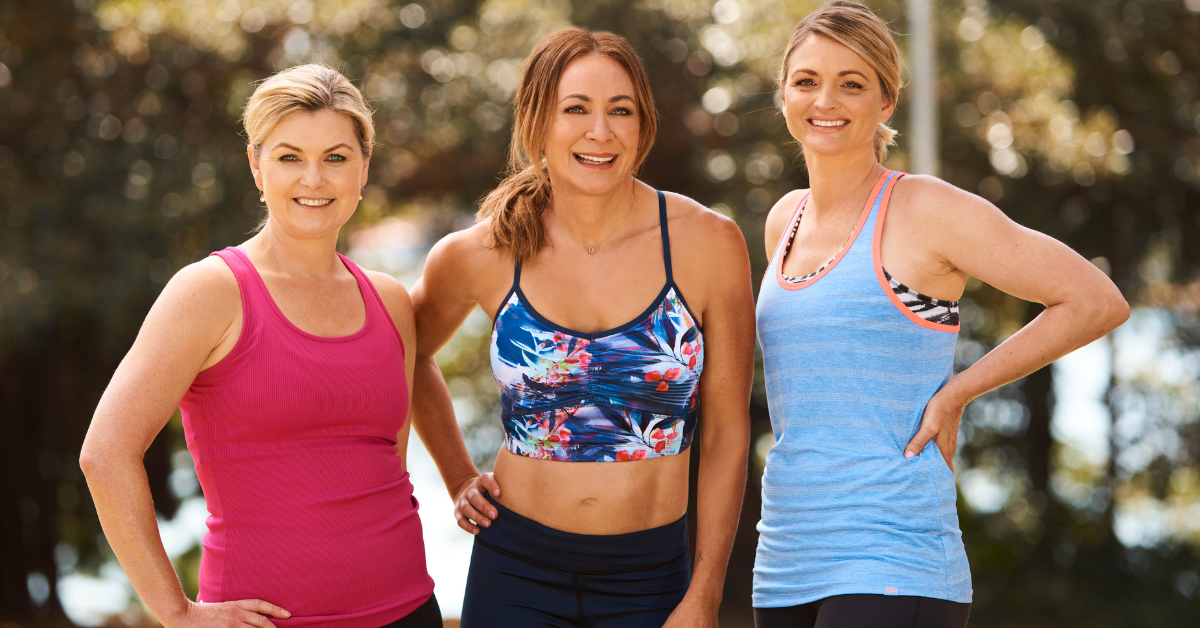So you’ve had your baby and are now super keen to get back to some ‘real exercise,’ like jogging. However, there are so many mixed messages about whether it’s safe to return to this type of exercise after childbirth.
Who do you listen to? How do you know when your body is ready? Are there any short or long-term ill effects from running too soon after delivering your baby?
These questions are all extremely important to explore before you return to any form of jogging, jumping or medium-to-high impact exercise.
Is there a simple answer out there? Unfortunately not. We can give guidelines based on the evidence, but we must remember that every woman is different, so one recommendation may not necessarily be the right fit for all.
What’s the big deal?
There are three factors to consider when we look to safely advise a new mum that jogging would be appropriate for her:
1. The pelvic floor muscles: is there sufficient strength of the pelvic floor muscles (PFM) and ‘stiffness’ in the support structures and tissues for the bladder, bowel and uterus inside the pelvis?
2. The lower back and pelvic joints: is there good recovery and strength of the abdominal and other postural muscles to keep the back and joints safe under the impact of jogging?
3. Other risk factors individual to each new mum: does this mum have a low or high risk of developing issues when returning to exercise?
Now let’s explore the effects of jogging on pelvic floor muscles and the very real risks of prolapse.
What is prolapse?
Inside a woman’s pelvis are organs including the bladder, uterus and rectum (back passage). These organs are held in place from above via tissues called fasciae and ligaments. The PFMs also provide upward support, acting as a sling-like structure holding the weight of these organs from below.
Problems can occur at these organs due to stretching, tearing or weakening of the fascia tissue, or PFMs. This is commonly caused by pregnancy, vaginal childbirth and menopause. This can result in the pelvic organs falling or bulging down into the vagina. This is known as a vaginal prolapse, or pelvic organ prolapse.
PFM recovery and the weakness new mums often experience in those first 12 months after having a baby offers decreased support of these three pelvic organs. Hormonal changes, such as those still in the bloodstream of a breastfeeding mum, can also alter the ‘stiffness’ of the supporting tissues from above, again resulting in less support of these organs in the pelvis.
Now to jogging!
Jogging really does have a vertical effect on the whole body. There is the fall of your full body weight to the ground with each step, as well as the impact and drive off the ground. The need for strength in all of your muscles and organ supportive tissues is very important. This is very much the case with PFMs also.
In studies and research trials around the world, the pressures on the vagina and PFM have been measured in relation to various activities.
Here are some comparisons that may help you to understand the real pressures on your PFM, and therefore the need for great strength in this region.
- Lying down 5
- Sitting and standing upright 25
- Jogging 54
- Laughing 85
- Coughing 98
- Jumping jacks 127
Am I at risk when it comes to prolapse?
Even now after having your baby you can still be at risk of prolapse. There are well documented signs to watch for that may indicate prolapse. These include:
- Lower back or low abdominal pain
- Dragging sensations in the lower belly or vagina
- Bulging of the vagina
- Pain with sexual intercourse
- Leaky bladder
- Genetic history of prolapse in sisters, mothers and grandmothers.
It is thought as many as one in three vaginal births result in a small degree of prolapse. An internal vaginal examination by your women’s health physio or doctor can accurately assess the presence of any prolapse or risks associated with postnatal exercise. This will allow for the correct advice to be given to you before starting up jogging or gym visits again.
Other factors will also be considered, such as if you are still breastfeeding, or if you had a difficult birth.
Also read: 5 Exercises for Mums with Babies
So am I safe to start jogging?
The simple answer is that every woman is different, and caution is the best approach.
Postnatal assessment of your lower back strength and alignment, pelvic alignment, abdominal strength and internal vagina really is the safest and most accurate way to advise all new mums on returning to exercise and jogging.
As women’s health physiotherapists, we advocate and strongly urge all of our pregnancy clients to visit us up to six months after having her baby for this check up.
However, if you really wish to jog after having your baby, here are some suggested guidelines:
1. Wait at least three months after a vaginal birth to start gentle jogging. Ensure that your PFM health is all back to normal – check that you have good bladder control, that there are no feelings of dragging or bulging down and that you have normal sensation, including during sexual intercourse.
2. Wait at least six months after a caesarian section to start gentle jogging. Although your PFM recovery is better than that after a vaginal birth, the recovery of your wound, abdominal strength and ultimately your support for the lower back and spine are of greater concern and need longer to recover.
3. Consider how active you were both before and during your pregnancy. If you did not jog or exercise much back then, give yourself longer than these recommended timeframes to start exercising.
4. Be sensible when building up your jogging. Try walk-jogs at first and watch for any concerning signs around the pelvis, lower back and abdomen. Slowly and sensibly build up your jogging, but leave that half-marathon training for next year.
5. Get a check up if there are any signs for concern. Feelings that things are not normal ‘down there,’ or you seem to be struggling to get your PFM exercises stronger, are signs you should get a check up. We all know our bodies best, so do listen and act.
To read more about women’s health physiotherapy and prolapse, visit The Fix Program.
Katrina Tarrant is the owner and principal physiotherapist of The Fix Program in Sydney’s CBD. The Fix Program, helping many since 2005, is a clinic and pilates studio designed to heal, strengthen and protect bodies from injury and pain. Katrina is also a mother of two and is passionate about achieving the physical and mental best in a woman throughout her childbearing years.
12WBT has a specific program for new mums designed to help you gently recover from childbirth and safely get back into exercise. Learn more about the Post Baby Program.















